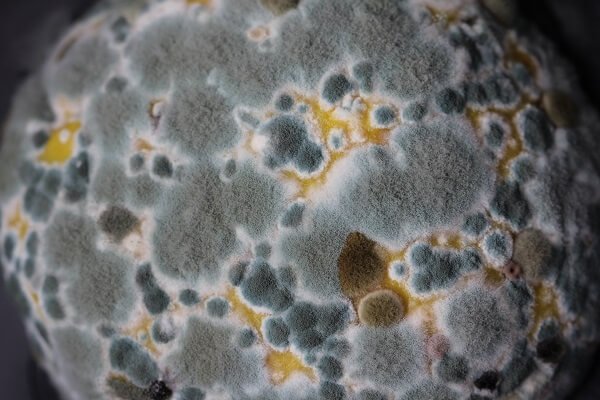
Mead, also known as honey wine is an iconic beverage that can be easily made at home.
However, like any homemade beverage, there’s a possibility that your mead could go bad due to mold or some other bacterial contamination.
In this article, we will delve into the signs that indicate your mead may have gone bad and provide you with insights on how to prevent and address these issues.
Spotting the Signs of Mold
Mold growth on the surface of your mead is a clear indicator of spoilage. Recognizing the signs early can help salvage your batch.
Fuzzy Growth on the Surface
If you notice fuzzy, discolored growth on the surface of your mead, it’s likely mold. In the early stages of contamination, the mold will form in the shape of dots and will spread into a blanket-looking shape with time.
There’s a rule when it comes to spotting mold in any booze or non-alcoholic drink, if it continues to grow day after day exponentially, it’s 100% mold.
In some instances with meads and beers, and this is particularly the case with kombucha tea, the yeast, fruit, and spices particles can form into tiny dots which can resemble the mold, so it’s important to be sure whether it’s mold or something else before writing the batch off.
And finally, if there’s hair on top of your mead, it’s also a sign of certain mold!

Unusual Color Changes
Black, green, reddish, and white are the notorious colors that describe the growth of mold in mead as different mold species can have varying colors.
Moreover, drastic color changes in your mead, such as it turning unusually cloudy or dark, can be a sign of spoilage.
Off-Putting Odors
Spoiled mead often emits unusual, off-putting odors. Trust your senses; if it doesn’t smell right, it might not taste right either.
What to do if you spot mold in mead?
You might be thinking is there a way to save a moldy mead and what should you do?
While many people for some reason recommend various ways of dealing with mold in mead and go as far as suggesting that a simple racking to a new fermenter and treating with Campden tablets will save it, this is far from the truth.
Unfortunately, there’s no way of saving a moldy mead and you should throw it down the sink.
Once the mold colonies visually spread, no matter how insignificant the mold might look in the beginning, once the mead is contaminated with mold it’s over.
Mold will only continue to grow in the future and if you were to stop the spread with some food-safe chemicals, the mycotoxins produced by mold are found deeply in the mead and not only on the surface.
Thus, the taste will be forever ruined and it will only get worse as time passes.
Moreover, mycotoxins produced by various mold types (link to WHO article) can be extremely dangerous for digestion as they come with serious health consequences.
Thus, once again, don’t risk it and throw it down the sink!
Identifying other possible contaminations
Infections and contaminations caused by various microorganisms can also compromise the quality of your mead.
Some people believe that no bacteria can grow in mead, but this is not true.
Bacteria can grow in mead, and this is especially true in the early stages. Later, when mead fully ferments, the odds of bacteria contaminations are lower, yet still exist.
Understanding these infections and contaminations can help you take appropriate action.
Wild Yeast Contamination
Wild yeast contamination can lead to off-flavors and aromas as wild yeast colonies can overrun the existing yeast colonies.
A mead contaminated with wild yeast might taste overly sour or untypical to what you tried before and be prone to aggressive fermentations.
While this is not generally wanted contamination, sometimes brewers take the odds and willingly contaminate their brew with wild yeast, as this is exactly how the finest Belgium beers were born!
Bacterial Infections
Bacterial infections can produce foul-smelling compounds, causing your mead to smell rancid or unpleasant. As the saying goes, if it smells bad it probably tastes bad.
Numerous off-flavors are connected to this problem and usually, the only way to deal with it is to throw the entire batch down the sink.
Acetic Acid Bacteria
If your mead tastes excessively vinegary, it might be due to an infection by acetic acid bacteria.
This is the most common bacteria contamination that occurs in mead-making, so it’s important not to underestimate it.
What to do in case of these contaminations?
In the case of wild yeast contamination, it is a game of odds, if you are lucky you might have created the best mead in your life that will outcompete existing mead producers, but if you are unlucky the mead will be ruined.
Any bacterial contamination will permanently ruin the mead and you’ll have to throw it down the sink.
That said, these contaminations aren’t necessarily dangerous, but the altered flavors and smell will probably make you regret not throwing them down the sink.
Can homemade mead cause botulism?
It’s said that botulism can’t grow in mead as mead doesn’t contain enough proteins that are essential for the spread of botulism.
While the spores responsible for botulism are found in honey, honey is regularly consumed without any health risks.
Botulism is dangerous for infants as their bodies can’t tolerate the spores, but for older children and adults, there is no risk of botulism.
It’s true that high temperatures used for making the must aren’t enough to kill the spores, and thus spores could be found in the must.
Yet, just as you wouldn’t give honey to an infant due to the risk of botulism I assume you neither would give mead to an infant.
Common Causes of Spoilage
Ensuring the quality of your mead starts with preventing contamination. Several factors can contribute to spoilage, including unsanitary equipment, airborne contamination, and contaminated ingredients.
Unsanitary Equipment
Using improperly cleaned equipment introduces unwanted microorganisms into your mead, potentially leading to spoilage. Proper cleaning and sanitization of equipment are paramount.
Check for tricky spots that aren’t easy to observe from afar, such as inside the spigot, tiny dots of dirt in a siphon, bottling wand, or on the walls of a bottle.
Moreover, if you use plastic fermenters, the odds are that you created tiny cracks somewhere in the plastics when you were cleaning them in the past.
These tiny cracks allow the bacteria to nest inside and become invincible to sanitation solutions.
Choosing the right fermenter is half of the job when it comes to cleaning and sanitation.
Airborne contamination
Airborne contamination is always a risk because no matter how clean the equipment, some nasties always travel in the air.
To protect against airborne contamination, airlocks should be properly installed and full of the right type of liquid at all times.
However, we sometimes get reckless and introduce unnecessary air and possible germs into the fermenter when opening it to check the progress, to rack it, to add late additions, or at the very beginning during the pitching of the yeast.
Contaminated Ingredients
Contaminated fruits and spices can introduce undesirable microflora to your mead. So, always source your ingredients from reputable suppliers and never put anything raw into your mead.
This means that anything you put in should be somehow cleaned off possible contaminants.
This can be done with the following methods:
- Add additions while mead is still hot
- Soak the spices in vodka overnight
- Bake the fruits in the oven
- Use Campden tablets
- Pasteurize
Final take
Spending precious time and energy in mead making only to find out that the mead got moldy or contaminated is the nightmare of every mead maker.
This emphasizes the importance of proper cleaning and sanitation protocol, as well as the overall attention to the details which could cause contamination.
Unfortunately, if the contamination occurred you’ll have to throw it down the sink and improve the protocol so that mistake never happens again!
Don’t feel bad if the contamination happened, I had more than a few unpleasant contaminations with beers in the past and everybody goes through it at one point. It’s not easy to be a mead maker.
Yet, with time we get better and don’t let the same mistakes occur twice or thrice!
